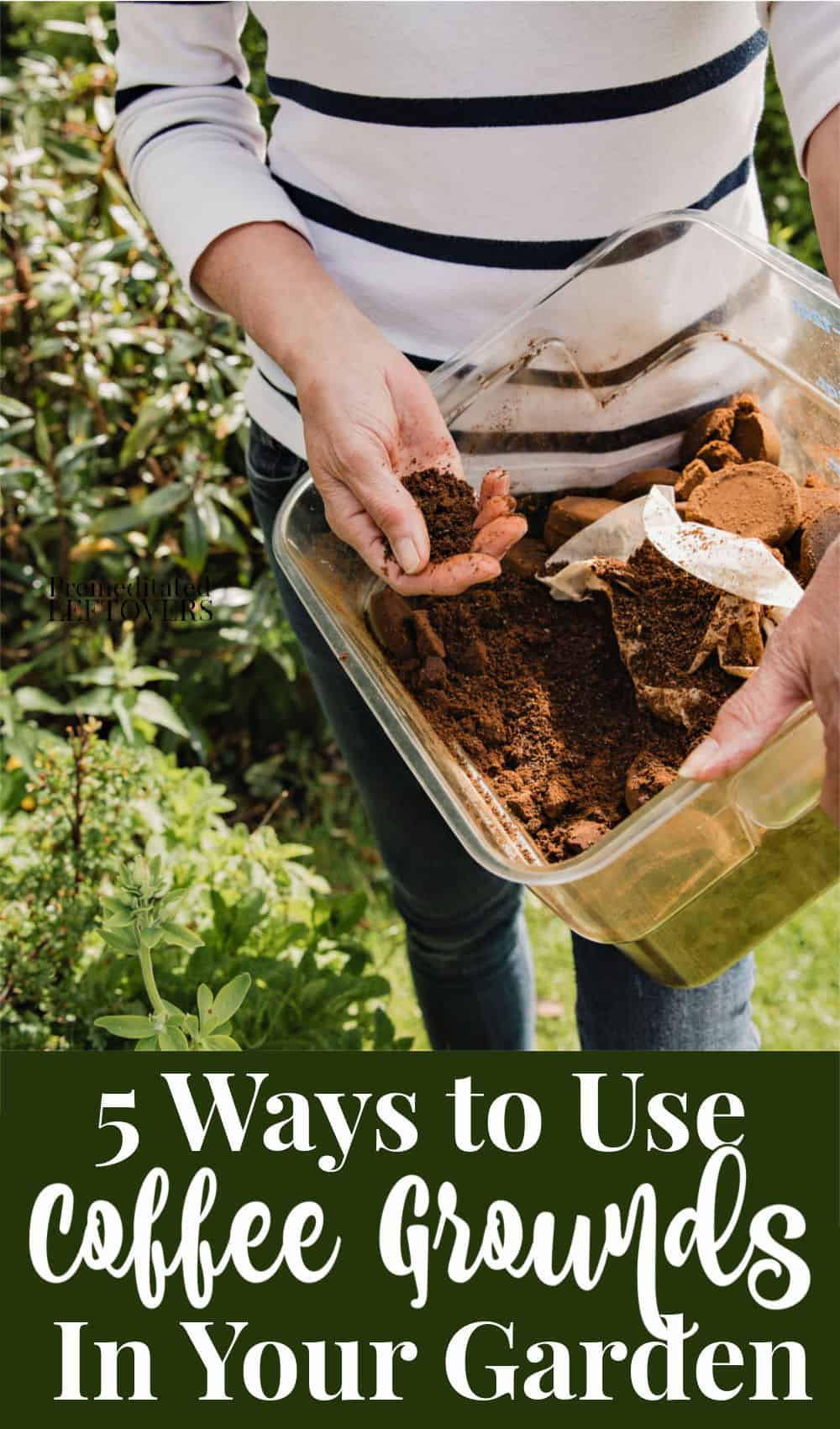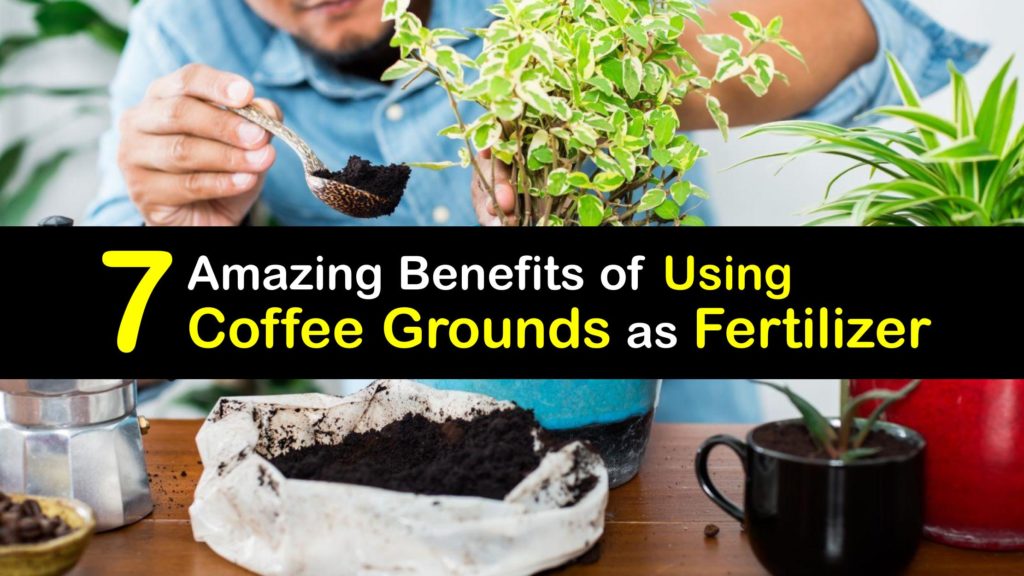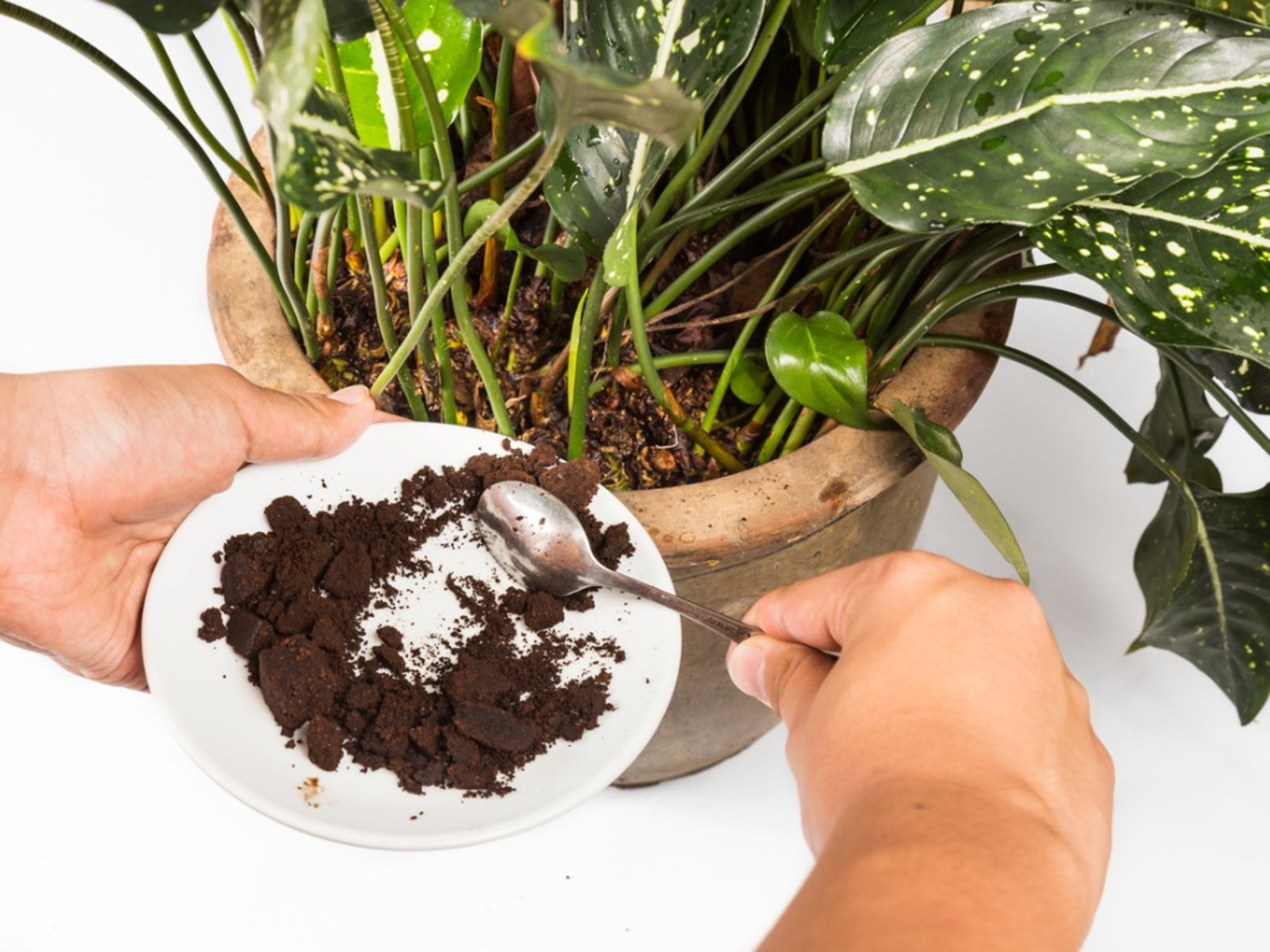Unlocking the Nutritional Benefits of Coffee Grounds
Coffee grounds, a byproduct of the coffee brewing process, have long been recognized as a valuable resource for gardeners. Rich in essential nutrients, coffee grounds can be repurposed as a natural fertilizer to nourish plants and promote healthy growth. By harnessing the potential of coffee grounds, gardeners can create a sustainable and environmentally friendly approach to fertilizing their plants.
One of the primary benefits of using coffee grounds as a fertilizer is their high nutrient content. Coffee grounds are rich in nitrogen, phosphorus, and potassium, making them an ideal amendment for soil. These essential nutrients play a crucial role in plant development, promoting healthy root growth, leaf development, and fruit production. By incorporating coffee grounds into their fertilization routine, gardeners can provide their plants with a boost of nutrients, leading to improved overall health and productivity.
In addition to their nutrient-rich profile, coffee grounds also possess other beneficial properties that make them an attractive option for gardeners. The high carbon content in coffee grounds, for example, can help to improve soil structure and increase its water-holding capacity. This can be particularly beneficial for plants grown in containers or in areas with poor soil quality. Furthermore, the antioxidants present in coffee grounds have been shown to have a positive impact on soil microorganisms, promoting a healthy and balanced ecosystem.
When used in conjunction with other natural fertilizers, coffee grounds can be a powerful tool in creating a nutrient-rich soil amendment. By combining coffee grounds with compost, manure, or worm castings, gardeners can create a customized fertilizer blend that meets the specific needs of their plants. This approach not only reduces waste but also promotes a more sustainable and environmentally friendly approach to gardening.
As the popularity of using coffee grounds as a fertilizer continues to grow, it’s essential to recognize the potential benefits and drawbacks of this approach. While coffee grounds can be a valuable resource for gardeners, it’s crucial to use them in moderation and in combination with other fertilizers to avoid overloading the soil with nutrients. By adopting a balanced and sustainable approach to fertilization, gardeners can unlock the full potential of coffee grounds and create a thriving and productive garden ecosystem.
How to Turn Coffee Grounds into a Valuable Garden Resource
To harness the full potential of coffee grounds as a fertilizer, it’s essential to collect, dry, and prepare them properly. Start by collecting coffee grounds from your daily coffee brewing routine or ask your local coffee shop if they have any to spare. It’s crucial to dry the coffee grounds thoroughly to prevent mold and bacterial growth, which can be detrimental to plant health. Spread the coffee grounds out in a thin layer on a baking sheet or tray and let them air dry for several days.
Once the coffee grounds are dry, you can mix them with other compost materials to create a nutrient-rich soil amendment. A general rule of thumb is to mix 1 part coffee grounds with 2 parts compost or other organic matter. This will help to balance out the nitrogen levels and create a more stable fertilizer. You can also add other natural fertilizers like manure, worm castings, or bone meal to create a customized blend.
When mixing coffee grounds with other compost materials, it’s essential to consider the carbon-to-nitrogen ratio. Coffee grounds are high in nitrogen, so it’s best to balance them out with carbon-rich materials like leaves, straw, or shredded newspaper. Aim for a mix that is 2/3 carbon-rich materials and 1/3 nitrogen-rich materials. This will help to create a stable and nutrient-rich fertilizer that will benefit your plants.
Another option is to use coffee grounds as a mulch or top dressing for your plants. Simply sprinkle the dried coffee grounds around the base of your plants, taking care not to overdo it. A thin layer of 1-2 inches is sufficient. As the coffee grounds break down, they will release their nutrients into the soil, providing a slow release of fertilizer to your plants.
By following these simple steps, you can turn coffee grounds into a valuable garden resource that will benefit your plants and reduce waste. Whether you’re a seasoned gardener or just starting out, using coffee grounds as a fertilizer is a simple and effective way to create a more sustainable and environmentally friendly garden.
Choosing the Right Plants for Coffee Ground Fertilizer
Not all plants are created equal when it comes to benefiting from coffee ground fertilizer. Certain plants, such as acid-loving plants, are particularly well-suited to thrive with the addition of coffee grounds. Azaleas, blueberries, and rhododendrons are just a few examples of plants that can greatly benefit from the acidic properties of coffee grounds.
These plants, which are commonly found in acidic soils, can struggle to obtain the necessary nutrients in alkaline soils. Coffee grounds, with their pH level of around 6.5, can help to lower the soil pH and provide these plants with the necessary acidity to thrive. Additionally, the nutrients present in coffee grounds, such as nitrogen, phosphorus, and potassium, can help to promote healthy growth and development in these plants.
Other plants that can benefit from coffee ground fertilizer include ferns, begonias, and impatiens. These plants, which prefer slightly acidic to neutral soils, can benefit from the nutrient-rich properties of coffee grounds. By incorporating coffee grounds into their fertilization routine, gardeners can provide these plants with the necessary nutrients to promote healthy growth and development.
On the other hand, plants that prefer alkaline soils, such as succulents and cacti, may not benefit from coffee ground fertilizer. In fact, the acidic properties of coffee grounds can potentially harm these plants. It’s essential to research the specific needs of your plants and adjust your fertilization routine accordingly.
By choosing the right plants for coffee ground fertilizer, gardeners can unlock the full potential of this natural and sustainable fertilizer. By providing plants with the necessary nutrients and acidity, gardeners can promote healthy growth and development, while also reducing waste and minimizing their environmental impact.
The Science Behind Coffee Grounds’ Fertilizing Properties
Coffee grounds’ fertilizing properties can be attributed to the presence of essential nutrients such as nitrogen, phosphorus, and potassium. These nutrients are released as the coffee grounds decompose, providing a slow release of fertilizer to plants. The decomposition process is facilitated by microorganisms such as bacteria and fungi, which break down the organic matter into a form that can be easily absorbed by plants.
The nitrogen present in coffee grounds is particularly beneficial for plant growth, as it plays a critical role in the development of leaves, stems, and roots. Phosphorus, on the other hand, is essential for root development, flower and fruit production, and overall plant maturation. Potassium helps to regulate water balance, promotes healthy root growth, and enhances overall plant resistance to disease.
The release of these nutrients from coffee grounds is influenced by factors such as soil pH, temperature, and moisture levels. In general, coffee grounds tend to release their nutrients more slowly in acidic soils and more quickly in alkaline soils. This is because the microorganisms responsible for decomposition are more active in alkaline environments.
Research has shown that the addition of coffee grounds to soil can also improve its structure and fertility. The organic matter present in coffee grounds can help to increase the soil’s water-holding capacity, reduce soil erosion, and promote the growth of beneficial microorganisms. This, in turn, can lead to improved plant growth, increased crop yields, and enhanced overall soil health.
Furthermore, the use of coffee grounds as a fertilizer can also help to reduce waste and minimize environmental impact. By repurposing coffee grounds as a fertilizer, gardeners can reduce the amount of waste sent to landfills and decrease their reliance on synthetic fertilizers. This approach not only benefits the environment but also promotes sustainable gardening practices.
Using Coffee Grounds in Different Gardening Scenarios
Coffee grounds can be used in a variety of gardening scenarios, making it a versatile and convenient fertilizer option. In container gardening, coffee grounds can be added to the potting mix to provide a boost of nutrients to plants. This is especially beneficial for plants that are prone to nutrient deficiencies, such as tomatoes and peppers.
In raised beds, coffee grounds can be incorporated into the soil to improve its structure and fertility. This can help to increase the water-holding capacity of the soil, reduce soil erosion, and promote the growth of beneficial microorganisms. Raised beds are ideal for growing a variety of plants, including vegetables, fruits, and flowers.
Indoor plants can also benefit from coffee grounds. Adding a small amount of coffee grounds to the potting mix can help to improve the soil’s fertility and structure. This is especially beneficial for plants that are prone to nutrient deficiencies, such as African violets and begonias.
Coffee grounds can also be used in garden beds to improve soil health and fertility. By incorporating coffee grounds into the soil, gardeners can reduce the need for synthetic fertilizers and promote a more sustainable gardening practice. This approach can also help to reduce waste and minimize environmental impact.
When using coffee grounds in different gardening scenarios, it’s essential to consider the specific needs of the plants. For example, acid-loving plants like azaleas and blueberries may require more coffee grounds than other plants. It’s also important to mix the coffee grounds with other soil materials to avoid over-fertilizing.
By using coffee grounds in different gardening scenarios, gardeners can unlock the full potential of this natural and sustainable fertilizer. Whether you’re growing plants in containers, raised beds, or indoor pots, coffee grounds can provide a boost of nutrients and improve soil health and fertility.
Combining Coffee Grounds with Other Natural Fertilizers
While coffee grounds can be used as a standalone fertilizer, combining them with other natural fertilizers can create a nutrient-rich soil amendment that provides a range of benefits to plants. One popular option is to mix coffee grounds with compost, which is rich in nutrients and microorganisms that help to break down organic matter.
Compost and coffee grounds can be mixed together in a ratio of 2:1 or 3:1, depending on the desired level of nutrients. This mixture can be added to the soil as a top dressing or incorporated into the soil as a fertilizer. The combination of compost and coffee grounds provides a slow release of nutrients, which can help to promote healthy plant growth and development.
Another option is to mix coffee grounds with manure, which is high in nitrogen and phosphorus. This mixture can be used to fertilize plants that require a boost of nutrients, such as tomatoes and peppers. However, it’s essential to use manure that is well-rotted and free of pathogens to avoid contaminating the soil.
Worm castings, also known as vermicompost, can also be mixed with coffee grounds to create a nutrient-rich soil amendment. Worm castings are high in microorganisms and nutrients, which can help to promote healthy plant growth and development. This mixture can be used to fertilize a range of plants, including vegetables, fruits, and flowers.
When combining coffee grounds with other natural fertilizers, it’s essential to consider the specific needs of the plants. For example, acid-loving plants like azaleas and blueberries may require a higher ratio of coffee grounds to other fertilizers. It’s also important to mix the fertilizers properly to avoid over-fertilizing, which can harm plants.
By combining coffee grounds with other natural fertilizers, gardeners can create a nutrient-rich soil amendment that provides a range of benefits to plants. This approach can help to promote healthy plant growth and development, while also reducing waste and minimizing environmental impact.
Common Mistakes to Avoid When Using Coffee Grounds as Fertilizer
While coffee grounds can be a valuable addition to your garden, there are some common mistakes to avoid when using them as fertilizer. One of the most common mistakes is overusing coffee grounds, which can lead to an overabundance of nitrogen in the soil. This can cause plants to become leggy and weak, and can also lead to an increase in pests and diseases.
Another mistake to avoid is not mixing coffee grounds properly with other soil materials. Coffee grounds can be quite dense and may not break down easily, so it’s essential to mix them with other compost materials or soil amendments to ensure they are fully incorporated into the soil. This will help to prevent any adverse effects on plant growth and development.
Applying coffee grounds too close to plant roots is also a common mistake. Coffee grounds can be quite acidic, and applying them too close to plant roots can cause burning or damage to the roots. It’s essential to apply coffee grounds at a safe distance from plant roots, and to mix them with other soil materials to prevent any adverse effects.
Not monitoring soil pH is another mistake to avoid when using coffee grounds as fertilizer. Coffee grounds can affect soil pH, so it’s essential to monitor soil pH regularly to ensure it remains within a suitable range for plant growth. This will help to prevent any adverse effects on plant growth and development.
Finally, not combining coffee grounds with other sustainable gardening practices is a mistake to avoid. Coffee grounds can be used in conjunction with other natural fertilizers, such as compost or manure, to create a nutrient-rich soil amendment. This will help to promote healthy plant growth and development, while also reducing waste and minimizing environmental impact.
By avoiding these common mistakes, gardeners can get the most out of using coffee grounds as fertilizer and create a healthy and sustainable garden ecosystem.
Maximizing the Benefits of Coffee Ground Fertilizer in Your Garden
To get the most out of using coffee grounds as fertilizer, it’s essential to monitor soil pH regularly. Coffee grounds can affect soil pH, so it’s crucial to ensure that the soil remains within a suitable range for plant growth. This can be done by using a soil testing kit or by sending a soil sample to a laboratory for analysis.
Adjusting application rates is also crucial to maximizing the benefits of coffee ground fertilizer. The ideal application rate will depend on the specific needs of the plants, as well as the soil type and pH. A general rule of thumb is to apply 1/2 inch of coffee grounds per 10 square feet of soil.
Combining coffee grounds with other sustainable gardening practices is also essential to maximizing its benefits. This can include using compost, manure, or worm castings to create a nutrient-rich soil amendment. Additionally, incorporating cover crops, crop rotation, and integrated pest management can help to promote healthy plant growth and development.
Another way to maximize the benefits of coffee ground fertilizer is to use it in conjunction with other natural fertilizers. For example, mixing coffee grounds with compost or manure can create a nutrient-rich soil amendment that provides a range of benefits to plants.
Finally, it’s essential to be patient and consistent when using coffee grounds as fertilizer. It may take some time to see the benefits of using coffee grounds, so it’s crucial to stick with it and make adjustments as needed.
By following these tips, gardeners can maximize the benefits of coffee ground fertilizer and create a healthy and sustainable garden ecosystem. Whether you’re a seasoned gardener or just starting out, using coffee grounds as fertilizer is a simple and effective way to promote healthy plant growth and development.








